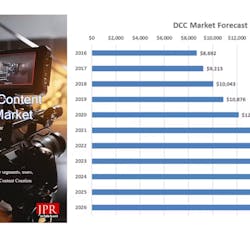According to Parks Associates, the value of pirate video services accessed by pay TV and non-pay TV consumers will exceed $67 billion worldwide by 2023. The research house estimates that if just 10% of pay TV subscribers discontinued pay TV services in favor of video delivered by pirates, the 2023 loss to those operators could approach $6 billion.
In 2019, Parks estimated that of the $9.1 billion lost in 2019 to credential sharing by U.S. video providers, 28% - or about $2.5 billion - was lost due to piracy. That $2.5 billion loss is part of an $8.4 billion overall loss to piracy in North America.
"The rest of the $8.4 billion can be attributed to piracy by other means, such as theft of video content from production, from distribution, from jail-broken consumer devices, and from hosting by other pirates," said Steven Hawley, contributing analyst, Parks Associates, and managing director of Piracy Monitor.
Parks says most of the publicly acknowledged antipiracy efforts by U.S. pay TV operators currently focus on detecting and reducing credential sharing and account abuse. Credential sharing results in significant lost revenue to pay TV operators; a Parks Associates survey of U.S. broadband households indicated that 5% used someone else's credentials to access a pay TV service, and 6% did so to access an online video service.
"More than 12.5 million pay TV households accessed pirate video in the U.S. in 2019, a low number compared to the Asia and Pacific region, where there are many more users but lower ARPU," said Elizabeth Parks, president, Parks Associates. "Video providers are carefully monitoring this threat and establishing dedicated teams and solutions to respond to piracy."
"Credential sharing falls into two categories. Most sharing is casual, with no intent to profit," Hawley said. "But the bigger risk is from pirates that purchase large stolen consumer databases via the 'Dark Web' and use automation to discover penetrable end user accounts."





